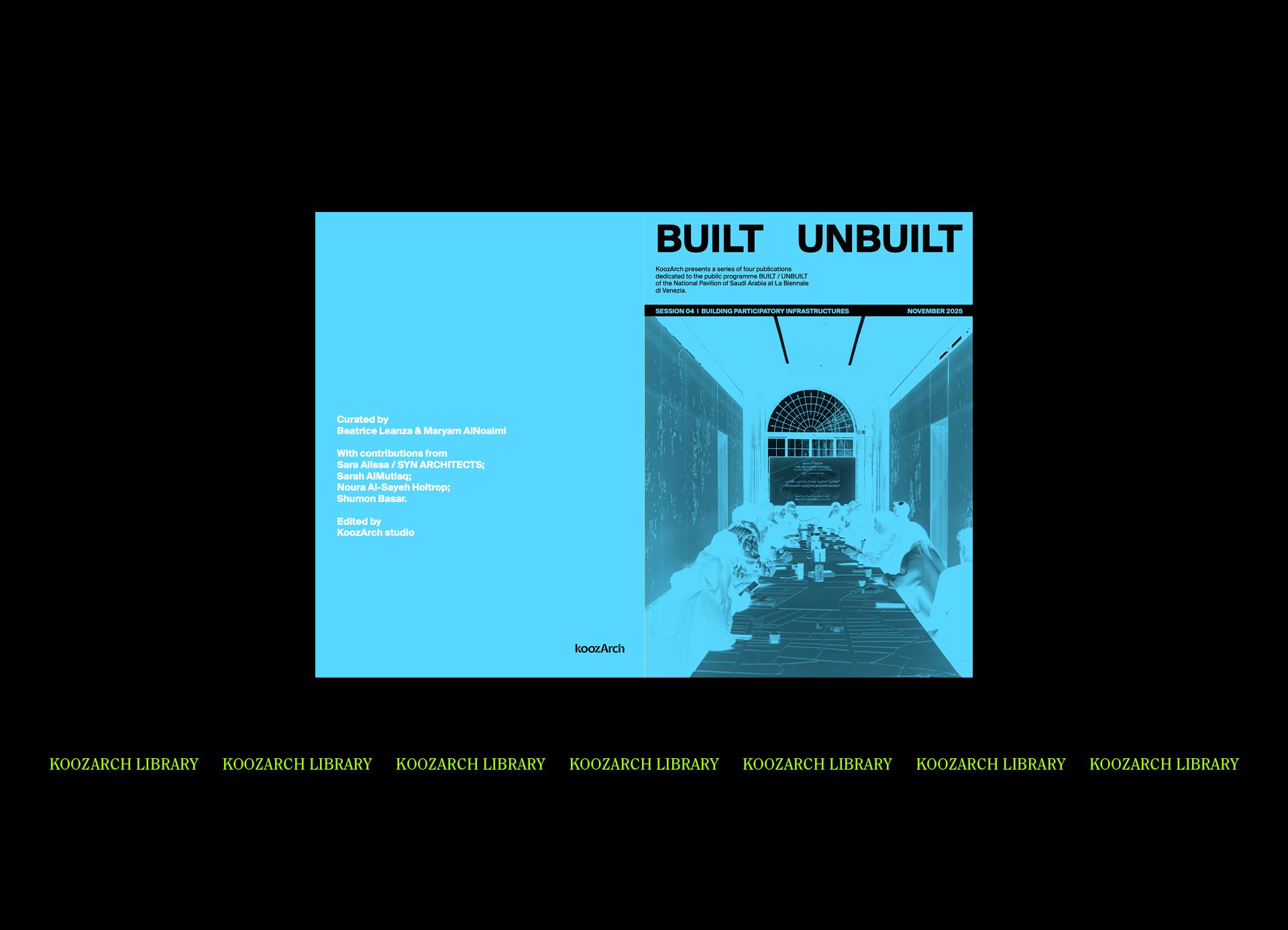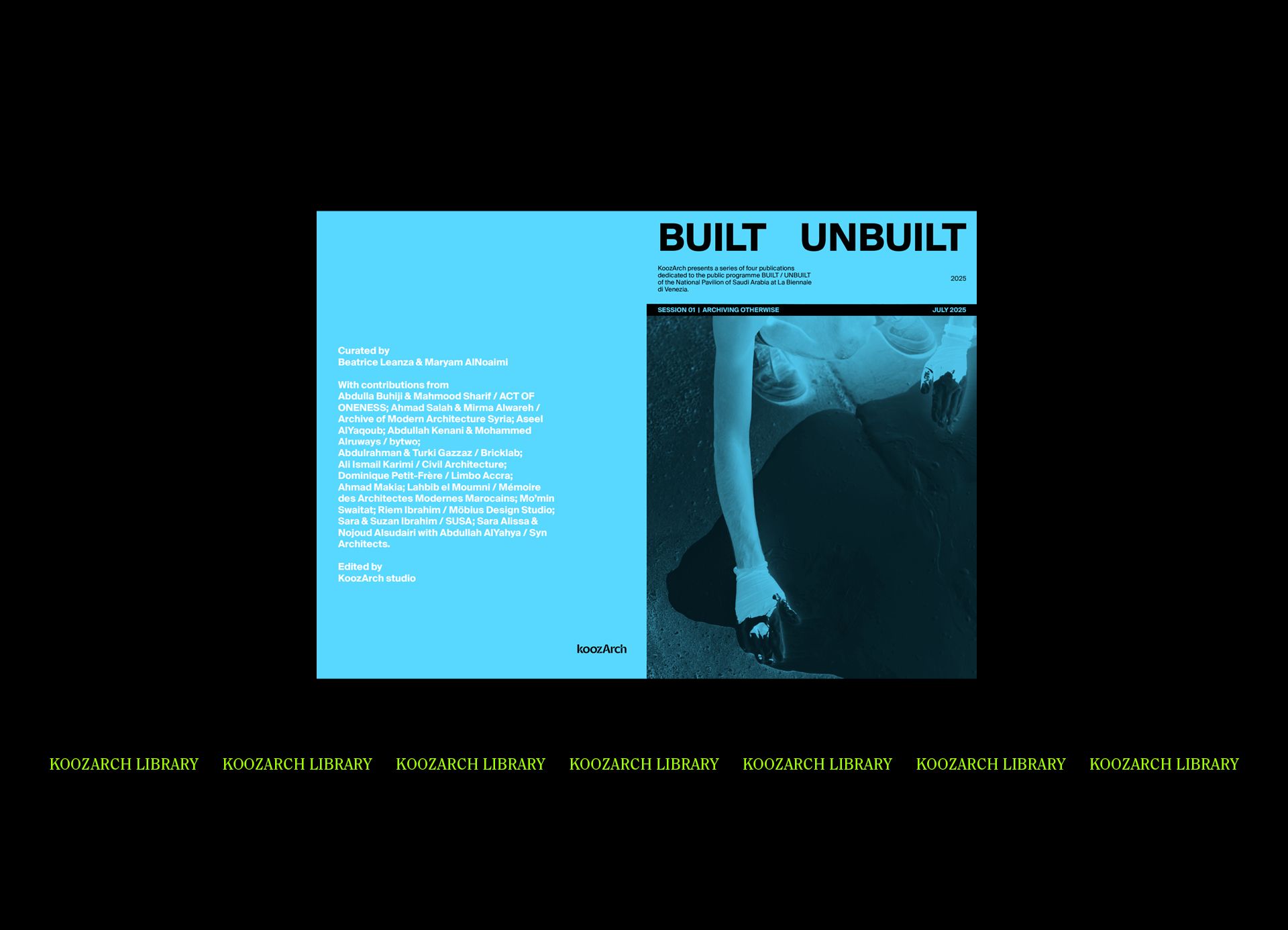Elizabeth Fisher’s Carrier Bag Theory of Evolution argues that, rather than hunting tools, the first cultural device used by humans was probably a carrier bag, which allowed them to transport the vegetables they gathered. Ursula K. Le Guin’s 1986 essay, The Carrier Bag Theory of Fiction, expanded this idea, moving away from the notion of the weapon-wielding hero. Based on these works, Ghost Stories: The Carrier Bag Theory of Architecture suggests listening to and understanding the stories of abandoned buildings, rather than focusing on more heroic, successful examples. In this interview with curators Sevince Bayrak and Oral Göktaş, we talk about unused buildings, collaborative life stories and the role of AI in imagining new lives for old buildings.
This interview is part of KoozArch's focus dedicated to Biennale Architettura 2023 - 18th International Architecture Exhibition The Laboratory of the Future, curated by Lesley Lokko and organised by La Biennale di Venezia. The International Exhibition is open in Venice from May 20 to November 26.

Pavilion of Türkiye, "Ghost Stories: Carrier Bag Theory of Architecture", 18th International Architecture Exhibition – La Biennale di Venezia, The Laboratory of the Future. Photo: Burj Al Babas - Mudurnu / Bulu, Turkey.
KOOZ Ghost Stories: The Carrier Bag Theory of Architecture documents the hundreds of abandoned buildings spread across the country, showing how, with the benefit of emerging technologies, they can be brought back to life at a crucial time for Türkiye, which recently suffered from major earthquakes and economic crisis. What prompted your interest in understanding the stories of these unused buildings? How does the project relate to Lesley Lokko’s curatorial theme on The Laboratory of the Future?
SEVINCE BAYRAK | ORAL GÖKTAŞ We took Lokko’s theme as an urgent question about our current interests and reframed it to ask ourselves: how will our current research subjects resonate with the possible themes of the near future? Our current interest in unused buildings that have been abandoned for years will either be an ongoing problem or a potential for the near future. Moreover, the introduction theme by Lokko which puts an emphasis on decarbonisation is also related to the call for not to demolish but to reuse.
How will our current research subjects resonate with the possible themes of the near future?
KOOZ The title of the exhibition is a direct reference to Ursula K. Le Guin visionary science fiction book The Carrier Bag Theory of Fiction where the author disputes the idea that the spear was the earliest human tool, and instead advocates for the carrier bag as the empty vessel carried by early humans. Could you expand on this reference further and how it shaped the exhibition/ project?
SB | OG Actually, that book is not fiction, it is an essay to question the main story of the roots of humanity that has been told as a killer story based on individual victory. When you change the object in the story, from a spear to a carrier bag, suddenly the whole story changes and becomes a collaborative life story. Architecture is passing through a period where its history is becoming a collaborative life story rather than individual, singular success stories of either architects or buildings. For us, Le Guin’s text was also a guide to tell an architectural story in a popular way, since the visitors of the Biennale mostly include non-architects.
Architecture is passing through a period where its history is becoming a collaborative life story.
KOOZSince construction in Turkey is triggered by economic growth rather than spatial need, the country has an enormous building stock of unused buildings which range from partially or completely empty skyscrapers, luxury apartments, hotels, schools, hospitals, restaurants, airports and recreational facilities. How did you approach the mapping of these structures, what trends were you able to observe across cities and the wider territory?
SB | OG Through an open call we made in December 2022, we collected information from all around Turkey. Basically, we can group abandoned buildings in three sections. The first group includes examples of settlements from the early Republican era which were abandoned when the public owner of the amenities was privatised. The second group includes examples from the 90's, when there was a boom of construction which ended up with giant, unused buildings. There is also a reason for aesthetics—people mainly hate 90’s postmodern giant buildings—which seemed to be the main reason for abandoning or demolishing them.The third group is the very recent building stock which either remained unsold or has been used for a very short period and then abandoned. The third group was built mainly due to addiction to construction.
The very recent building stock was built mainly due to addiction to construction.
KOOZ Through both AI and machine learning tools, the project explores new hopeful visions for each of the uninhabited buildings, showing how these can be repopulated and repurposed to benefit the community. How did you approach the programmatic / function use of these? How was the strategy developed on the basis of a critical study of the sites location and immediate community?
SB | OG There is a massive number of abandoned buildings all over the world and AI is a good tool to rapidly produce scenes where unused buildings are enlivened. For us, training a pre-trained AI with all the images we collected also lets the AI create new images which are not brand-new and shiny, but more like a blooming of a flower, a kind of embellishment to the existing.
AI is a good tool to rapidly produce scenes where unused buildings are enlivened.
KOOZ As you were preparing this project, two earthquakes, with magnitudes of 7.7 and 7.6, struck south-eastern Turkey, causing massive damage. In a country with an enormous building stock that must be reinforced to resist these kinds of earthquakes, how can you find new ways to transform the existing and introduce novel tools and methods to nurture the existing built stock? How is the current exhibition a step in this direction?
SB | OG The earthquakes unfortunately made this subject of reusing existing buildings even more urgent. Thousands of earthquake victims stayed homeless and most of them also lost their jobs and moved to other cities to start a new life. In this case, reusing the abandoned building stock would be the fastest way to produce temporary settlements for earthquake victims. Also the exhibition includes chapters named as “Concrescere,” “CSI” and “Repair Shop”, where concrete and other building materials and repairing techniques were the focus. These subjects were also relevant to the earthquakes.
Bio
Sevince Bayrak received her undergraduate degree from Istanbul Technical University (ITU) in 2005, followed by a MArch. degree in 2009 and a Ph.D. degree in 2014 in the same university. She spent a semester in Westminster University for doctoral research in 2010. She has been an external review member in the graduation project committee in ITU, East Mediterranean University and Artuklu University. After working in offices in Istanbul and Santiago, together with Oral Goktas, they founded SO? Architecture and Ideas in 2007.
Oral Göktaş received his undergraduate degree from Istanbul Technical University (ITU) in 2005, followed by a MSc degree in 2009 in the same university. After working in offices in Istanbul and Santiago de Chile, together with Sevince Bayrak they founded SO? Architecture and Ideas in 2007. In 2009, they took part in the research project of the London School of Economics with Arkitera in the Urban Age conference. They won numerous awards in architectural competitions, including the Young Architects Program in Istanbul Modern, in collaboration with MoMA - PS1. This project, Sky Spotting Stop, was realised in the courtyard of Istanbul Modern in 2013 and exhibited in MoMA and MAXXI.
Federica Zambeletti is the founder and managing director of KoozArch. She is an architect, researcher and digital curator whose interests lie at the intersection between art, architecture and regenerative practices. In 2015 Federica founded KoozArch with the ambition of creating a space where to research, explore and discuss architecture beyond the limits of its built form. Parallel to her work at KoozArch, Federica is Architect at the architecture studio UNA and researcher at the non-profit agency for change UNLESS where she is project manager of the research "Antarctic Resolution". Federica is an Architectural Association School of Architecture in London alumni.





